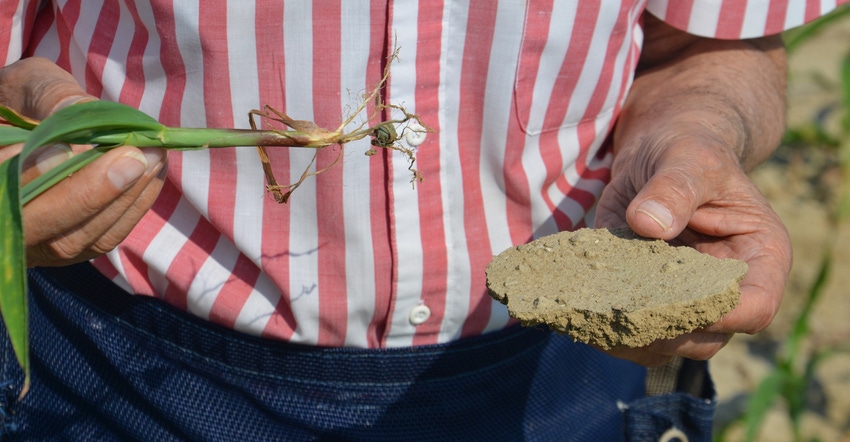
For many in Indiana, the perfect storm resulting in a growing season everyone would like to forget began last fall. Rainy periods in the last half of fall 2018 forced harvest under wet conditions. Many fields were rutted up just to get the crop out. Plans were to work in those rutted areas and address them this spring.
Instead, the spring of 2019 was so wet and so delayed that for many, it became necessary to work soils wet again. Instead of working to fix last year’s soil compaction, it became necessary to work ground and plant when you likely created more soil compaction.
Dave Nanda understands that fields had to be planted. As it is, it’s one of the latest planting seasons for corn in Indiana ever. However, that doesn’t erase the fact that some trips across the field, even the planting trip itself, created soil compaction.
“We found [compaction] while scouting once corn was finally up and growing this year,” Nanda says. “In many cases, only a few plants were severely affected. But it wasn’t hard to find compacted layers, even on or near the surface.”
In one case, Nanda dug up a small plant that had larger plants on either side of it to confirm why it was smaller. As he suspected, it had very few roots. What roots it did have were shallow. Nanda pulled up a chunk of soil near the plant, which held together and covered most of the palm of his hand. When soil is that hard, it’s easy to see why roots have trouble penetrating, he says.
Soil compaction effects
What you see now as far as soil compaction depends heavily on weather patterns during the growing season, experts say. Gary Steinhardt, a Purdue University Extension soil scientist, has studied soil compaction for four decades. He notes that if there is plenty of moisture during the growing season, effects of soil compaction will be less. However, expect more symptoms and more potential yield impact if dry spells produce crop stress.
Don’t count on freeze-thaw cycles to eliminate soil compaction either, he emphasizes. If you farm roughly along the latitude of Lafayette, Ind., you will see a maximum number of freeze-thaw cycles on average, but even then, it can take multiple winters to break up compacted layers. Effects of soil compaction created last fall or this spring can appear next year or even two or three years down the road. Weather patterns during each individual season will impact what you see that year, Steinhardt says.
If you can rotate fields where you know you created compaction to soybeans, it may lessen yield impact next year, Steinhardt notes. Soybeans tend to withstand soil compaction better and still produce more consistent yields than corn.
Deep ripping might help where there are definite, deep layers, but there isn’t scientific data to back this up. Planting cover crops and taking other actions to improve soil health would be steps in the right direction, Steinhardt concludes.
About the Author(s)
You May Also Like




